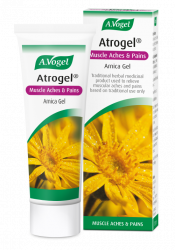Recover the right way!
Resting can be easier said than done but, when you have an overuse injury, you need to let your body rest so that it can heal itself properly. Often after exercising we can experience a pain known as DOMS (or Delayed Onset Muscle Soreness). This type of soreness normally occurs between 24 and 48 hours after your exercise and it is completely natural. It usually occurs if we have pushed our body beyond a range with which it is comfortable, particularly if the muscles in question have been sedentary for a while.
DOMS pain isn’t actually a bad thing as it helps to build muscle and muscle memory to make your body stronger. DOMS pain occurs because, when we exercise beyond our natural limits, we experience tiny microscopic tears in our muscle fibres.
It’s important to understand in your own body the difference between DOMS pain and injury pain as they can feel quite different. However, if you feel any sort of pain in your body, whether it is from DOMS or injury, it’s important to take this as an indication that your body is not ready to be pushed right now. Overuse injuries often crop up when we push through when our body is pleading for us to hold back, preventing and recovering from overuse injuries primarily comes from your understanding of your body’s thresholds.

Eat your way to a fast recovery
Did you know that what you eat can either help or hurt your joint pain? Inflammatory foods such as red meats can actually slow down our healing process – not good when we’re trying to recover from an overuse injury! Alternatively, your diet can also help along your recovery and support your muscles and joints.

Below I’ll give you a quick low-down of the top nutrients you should think of including more of to recover from your overuse injury, for a more in-depth exploration check out my blog for the best nutrients to support muscle healing and repair.
• Protein is required for muscle repair and so not having enough of it can slow your recovery process. When we are injured our protein needs are elevated to help the body to form new tissue. Protein is made up of amino acids – the basic building blocks for any and all structures in our body. However, most amino acids are only available to us through our diet as our body can’t create them on its own. Protein-rich foods include: almonds, broccoli, lentils and chicken.
• Magnesium is a biggie when it comes to relieving muscle cramps, but deficiency can also lead to weaker bones because our body needs magnesium in order to use calcium, a mineral that helps to keep our bones and teeth strong. Magnesium-rich foods include: spinach, avocados and bananas.
• Carbohydrates, as I’m sure many of you will know, are important for providing us with energy before a workout. Carbohydrates are your body’s first source of energy but, if we don’t have enough, then our body will use up our protein as fuel instead meaning that we won’t have enough left over for sufficient muscle recovery post-workout. Carb-rich foods include: beetroots, sweet potato, and oats.
Atrogel it!
 Apply a topical pain relief gel like our own Atrogel which contains fresh extracts of Arnica flowers to help soothe pain and reduce inflammation.
Apply a topical pain relief gel like our own Atrogel which contains fresh extracts of Arnica flowers to help soothe pain and reduce inflammation.
Professional help
If your injury appears to be getting worse or doesn’t seem to be getting better despite taking precautions to look after it, it may be time to seek the advice of a professional. This can range from a sport’s therapist, a physiotherapist, a personal trainer or even your local GP. They will be able to source out the root cause and be able to provide you with more information on what you can do to get back on track.
Stretch and strengthen the areas surrounding the injury

It’s definitely important to rest up and take the load off when it comes to overuse injuries, but, that being said, moving a little in a less intense way can actually help the recovery process. By stimulating blood flow to the muscles through movement, your body can make sure the valuable nutrients that your injury needs to recover gets to where they need to be.
Often when we feel pain in a particular area it isn’t the painful area itself that needs strengthening but actually surrounding areas. Overuse injuries can sometimes crop up from our muscles and joints taking on too much work to overcompensate for another weaker muscle. Below I’ve listed common pain-complaint areas and a couple of suggestions about where the pain could be coming from and what you can do about it.
•Pain around the knee – stretch and strengthen the adductors (inner thigh muscles) and the quadriceps (central thigh muscles). Tight quads can pull the kneecap out of alignment and result in knee pain as well as contribute to an overuse injury.
An easy exercise you can try: static squats. Stand with your back against a wall and your feet positioned 6-8 inches in front of you with the toes pointing forwards. Slowly lower your torso until your thighs are at a 90 degree angle with the ground. Be sure that your knee doesn’t overshoot your ankle – if it does walk your feet out a little bit more to ensure that your knee remains in line with the ankle bone. Stay here for 3-5 minutes then gently rise up and repeat. Check out my blog to find out if tight quads could be responsible for your knee pain and for some more easy ways to fix the problem.
• Pain around the shoulder – stretch and strengthen the muscles in the rotator cuff (the muscles in the shoulder that connect to the arm bone). Shoulder pain is a particularly common complaint in swimmers, tennis players and weight lifters.
A simple exercise you can try: shoulder shrugs. Try rolling your shoulders forwards and then switch to rolling them backwards.
• Pain in the hamstrings – stretch and strengthen the hamstrings. Hamstring tension and pain is usually caused by the hamstrings although it can sometimes be caused by tightness in the hip flexors. Hamstring injury is particularly common in runners and hikers.
An easy exercise you can try: forward folds. Forward folds target hamstring flexibility at the source. Stand with your feet hip-width apart, take an inhale and as you exhale fold from the hips and let the hands rest either on the floor, the shins or the knees. Try to keep your back and legs straight to get the most out of your stretch. Check out our stretches for tight hamstrings for more ways to develop flexibility in the hamstrings, as well as some modifications you can try to make the stretches a little bit easier.
• Pain around the Achilles tendon – stretch and strengthen the calf muscles. If you feel pain around the Achilles tendon this is sometimes an indicator that your calf muscles may be too weak to carry the workload that they need to in aerobic-type exercises.
An easy exercise you can try: lifting and lowering the feet. Try strengthening the calves by standing with both feet flat and lifting up onto the balls of the feet then slowly lower back down again. Do several repetitions until your calves tire.
• Pain around the ankle – strengthen and stretch the ankle joint. Ankle sprain is one of the most common injuries to occur, it can happen by accident or through exercise. Whatever the cause, weakness and reduced range of motion, either through natural causes or from previous injury, can make future ankle sprains more likely.
A simple exercise you can try: gentle ankle rotations. Practice pointing the toes and flexing the feet, as well as some gentle ankle rotations first in one direction and then switch to the other direction. Click here for more information on how to treat a sprained ankle.
• Pain around the hip – stretch and strengthen the adductor muscles. The adductor muscles have a very close relationship to the hips and tightness here can result in pain and tightness in the hips and hip flexors. Tight adductor muscles can wreak havoc all over the body in areas such as the knee, hip and groin areas and, unfortunately they are the most neglected of all the leg muscles.
A simple exercise you can try: butterfly pose. This stretch is perfect for targeting the hip and groin area and gently stretches the adductor muscles. Bring the soles of your feet together and gently let your knees flop out to the side. Don’t worry if your knees don’t touch the floor just place a cushion underneath for some extra padding. Watch our video below to learn how to practice butterfly pose.








